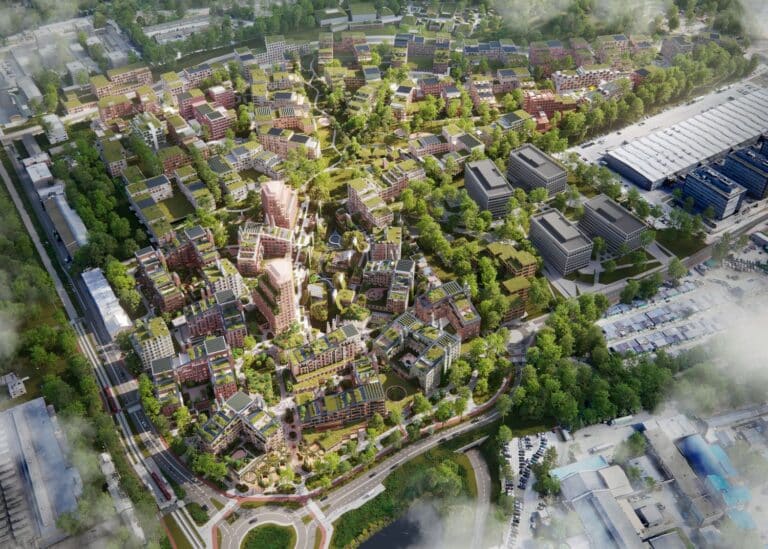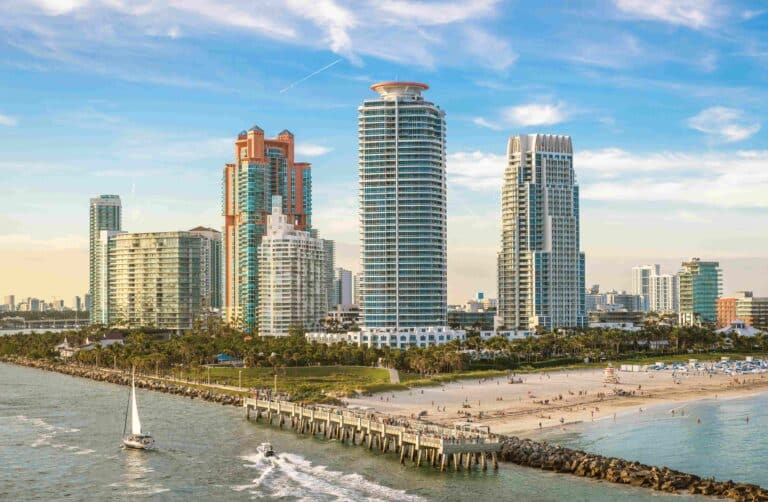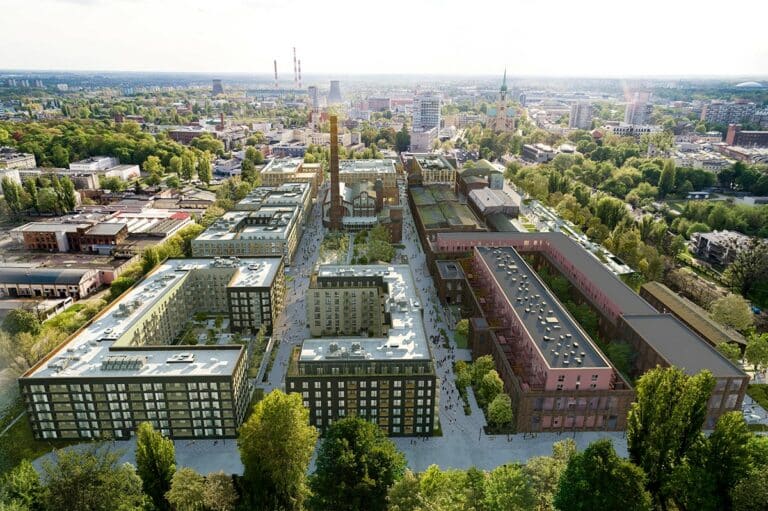Positive outlook for the private rented sector
Agnieszka Bulus-Trando from Poland Weekly talks to Mira Kantor-Pikus, Head of Equity Debt & Alternative Investments from Cushman & Wakefield.
PRS in Poland is a relatively new topic compared to the West. What are the differences between PRS in Poland and in the West?
The PRS (private rental sector) is the short name of the housing rental market owned by institutional investors. Apart from the PRS, residential investments also include private student houses – on the market known as PBSA (private built student accommodation) products, and retirement homes. Remember that residential investments do not include purchases by private persons for their own needs or small investment purchases of a few or a dozen or so apartments. The residential investment market in Poland, understood in this way, is only a few years old.
In Western Europe, apartment rental has been much more popular for many years than in Poland, and legal regulations provide tenants with some comfort related to the durability of their lease agreement.
If we compare investment activity in the commercial real estate sectors (offices, logistics and trade) with the residential sector (apartments for rent, student houses, retirement homes), the residential sector is gaining more and more importance and is constantly growing.
The housing sector behaves acyclically in relation to other segments of the real estate market. We noticed a large drop in demand for offices and commercial facilities during the pandemic, while demand for housing due to hybrid work increased. Also, demand for places in retirement homes does not directly depend on the economic situation on the market.
Currently, one of the biggest problems of the real estate development industry is insufficient supply of residential land for development. How is the PRS market doing in this situation?
Indeed, we have a shortage of residential land, especially in large cities with adopted local zoning plans that allow us to prepare an application for a building permit and conduct construction without undue delay. Adopting new plans, e.g. in Warsaw or Kraków, takes on average over 5-6 years, and obtaining decisions on development conditions in the area where the MPZP adoption procedure is in progress (local spatial development plan) is very often slowed down by the administrative right to suspend the procedure for 9 months. Therefore, prices of land intended for multi-family housing are rising, which significantly affects the price per square meter of flats. The high demand from individual buyers for apartments, both for their own needs and as an investment, means that only some developers offer buildings to institutional investors at a predetermined price, because in the face of high demand, developers have a chance for still under construction and progressing increased sales prices for individual buyers. Due to the small supply of projects for PRS in the residential function, some investors accept investments in housing units for rent in the case of the service function. Due to the fact that the PRS, in the form of apartments and private dormitories, is a relatively new product on the Polish market, there are many doubts as to the interpretation of planning provisions for a specific real estate in terms of possible functions.
Foreign investors are strongly interested in the PRS market in Poland? From what direction can we expect capital inflows into the PRS sector in the near future?
Transactions on the housing market in 2021 in Poland were dominated by investors from the Nordic countries, accompanied by investors from the United Kingdom and Germany. There is still no activity of Polish investors, such as pension or insurance funds, in this sector, because so far the only Polish player is the Apartment for Rent Fund with a portfolio of almost 2,000 apartments in the six largest Polish cities.
In Poland, due to the early stage of market development and the lack of products for sale with a stable income, investors buy buildings with flats for rent and student houses at the development stage with delivery of buildings with apartments after their construction and obtaining an occupancy permit. The purchase of products with development risk is taken into account only by some investors active in Western Europe, and the rest will enter the Polish market only when finished products with stable income are available, i.e. in approx. 2 years. At that time, the market of apartments for rent will reach the level of approx. 30,000 housing units, which will become an attractive size for the largest players.
What will be the impact of PRS on traditional housing?
At the end of December 2021, institutional investors owned approx. 7,000 apartments for rent located in Warsaw and major regional cities, with the owner of almost 30% of these apartments is the Apartment for Rent Fund. In addition, institutional investors secured the supply of approx. 25,000 sq m. apartments, most of which are under construction or in the process of obtaining a building permit, so they will enter the market in the next 2-3 years, which translates into approx. 8,500 apartments per year. Comparing the annual supply of apartments in the six largest Polish cities, the current share of institutional investors in the annual supply is approx. 9%.
The impact of the PRS transaction on traditional housing throughout Poland is small, but there is price competition in projects built in the best locations of Warsaw, Tri-City or Wrocław, i.e. where also investment purchases of individual investors and people with the highest incomes take place. In non-central locations, where developers carry out multi-stage housing projects, the allocation of some buildings to the PRS function is an attempt to diversify revenues and create a more interesting character of a given estate.
What is the reason for the great interest of foreign investors in the PRS sector in Poland? What makes our market so attractive?
The PRS market is attractive to investors not only in Poland, but globally, which is related to the consequences of the pandemic: lower investor appetite for purchasing investment products in the office, retail and hotel sectors as those most affected by lockdowns, increased demand for flats due to work hybrid and looking for a more attractive space to live and work, acyclicity in relation to commercial real estate.
The capitalization rates for PRS investments in the most popular cities of Western Europe (the so-called prime yields) in the last year amounted to an average of 3.25% -3.5%, and in the case of the most attractive cities they reached the following values in the fourth quarter of 2021: Zurich – 2.3%, Paris – 2.1%, Munich – 2%. In Warsaw, it is estimated that prime capitalization rates are around 4.9% -5%, and in regional cities around 5.5% -5.75%. The difference is significant, which increases the interest in our market from foreign investors, even taking into account the fact that revenues from PRS real estate in Poland are denominated in PLN and therefore are subject to foreign exchange risk.
What is the cooperation between investors in the PRS sector and developers currently looking like?
Most of the transactions currently concluded between investors and developers are based on the forward funding principle, which means that the developer builds the building in accordance with the investor’s expectations and the investor pays the developer a fixed price in line with the progress of works. After obtaining an occupancy permit and payment of the final amount, the ownership of the property is transferred to the investor. Another, less frequent structure is forward sale, i.e. delivering the building to the investor as agreed, with the payment being made after the building is constructed and the occupancy permit is obtained. Sometimes a JV company is also used, to which the developer usually contributes land with a building permit and arranges bank financing, and the investor pays the own share needed to obtain bank financing.
What do you think are the key aspects of a good PRS design that will attract customers and ensure a return on investment?
Currently, almost all PRS buildings offering apartments for rent have an occupancy of over 95%, which is a very good forecast for the future for other planned or under construction projects. The success of a good PRS project is due to several factors: location in attractive locations, close to office buildings or with good access to metro, high-speed rail, tram or buses, flexibility of the offer in terms of apartment size, so that a larger or smaller apartment could be offered if the tenant wanted to change the size due to the change in the life and professional situation, standardize flats and adapt them to the needs of young users, both in terms of equipment and design, operator service and communication with tenants using mobile applications, market rent. A large part of the tenants in PRS buildings are foreigners working in Poland, therefore it is important that communication with tenants and documentation is also in a foreign language. For an investor, the level of net operating income is important, i.e. not only the level of income from rent and service fees, but also property maintenance costs and operator costs.
In which cities is the PRS market developing the most dynamically and what does a standard flat for rent look like and what tenants does it attract?
The market for apartments for rent is just developing, which is why currently apartments purchased by institutional investors are located only in Warsaw and the largest regional cities, i.e. in the Tri-City, Wrocław, Poznań, Kraków, Łódź, and recently Katowice is also being taken into account. The second characteristic feature is their location in the city center, near office parks or with very good public transport. The location with an entertainment offer in the form of a cinema, clubs, cafes, a shopping center or a gym is an additional advantage. Due to the target group of tenants who are young people but who have jobs – singles or couples, the average area of flats for rent varies between 25 and 45 sq m. Most of the PRS apartments are fully or partially equipped, but at the tenant’s request it is possible to provide the apartment without furniture.
How do you forecast the development of the PRS market in the perspective of 5-10 years. What increases can we expect?
The housing market and demand are influenced, among other things, by the migration balance in specific cities, government policy and programs supporting housing construction, the level of interest rates on loans, the situation on the labor market, as well as housing prices and rent levels. Currently, the government is introducing a guarantee program that allows young working people who have creditworthiness, but do not have accumulated funds for their own contribution, to purchase housing without own contribution, and is developing housing for rent for working people, but with lower incomes. In addition, local governments through social housing support people with no income and give some of them the opportunity to rent such flats. Due to pro-housing measures for a large part of the society, it is possible to choose between owning a flat and incurring a long-term loan obligation and renting a flat without long-term obligations.
The right to choose means that the rental market, both for apartments offered by individual owners and by institutional investors, will continue to develop dynamically. The vast majority of tenants in PRS buildings are young professionals working in corporations or freelancers, both Polish and foreign, who have a flexible approach to work and residence. They represent the Z generation, who want to enjoy the amenities of city life, but not necessarily owning a flat and incurring long-term credit obligations, especially taking into account the current high interest rates and expectations of further increases.
Due to the fact that migration is net positive in most large agglomerations, the demand for flats in these cities will increase. The rental of flats offered by institutional investors is an interesting alternative to flats for rent offered by private owners. The main advantage is the reputation of landlords, standardized and thoughtful layouts of apartments and equipment, safety and certainty of rental, possible communication and documentation in a foreign language, no potential conflicts with the community, as well as the possibility of establishing social relations with other tenants in the building. In my opinion, in 5 years the number of apartments for rent may exceed 50,000 units. PRS buildings will be standard investment products on a par with office and hotel buildings.
Where does the belief that institutional investors are buying flats that Poles can buy and thus push up prices come from?
The market is completely free. Developers sell flats mainly to individual investors, as given the high demand they have the possibility to increase the price of unsold flats under construction. An additional benefit for developers when selling flats to private investors is the right to use funds belonging to investors accumulated on open trust accounts. In this way, developers have a cost-free loan from their clients, which is a significant benefit especially with rising interest rates.
In the case of selling the entire building under construction to an institutional investor, the price is set at the beginning when signing the preliminary contract and remains unchanged. Some transactions with institutional investors concern buildings built for a ‘service function’, which are a less interesting product for individual investors, because such a property is not an apartment within the meaning of the construction law and it is impossible to register in it.
In the longer term, housing prices are unlikely to fall, but not due to the presence of institutional investors, but due to rising costs – both for land and building materials, energy and personnel costs.
What are the prices of flats in Poland compared to Europe?
Average housing prices in the Polish capital have soared recently, but are still much lower than in most Western European capitals. However, taking into account the purchasing power in individual countries in relation to housing prices (the chart below) calculated using the so-called availability index, i.e. as the number of average monthly net wages needed to purchase 1 sq m of a flat, we come to the conclusion that this index is currently for apartments in the center of Warsaw is less favorable than the corresponding index in London, Luxembourg or Vienna, because in these cities 1 sq m of apartments on the outskirts of the city can be purchased for 1.5-2 average monthly net salaries, while in Warsaw it is about 2.3 of the average monthly net salary.
What trends are noticeable in the housing sector that could be relevant in 2022?
The main factors affecting the housing market are drastic increases in energy, materials and labor costs, and very high inflation. An element that will also affect the housing sector are the tax implications resulting from the Polish Deal.
The still low interest rates on deposits and the lack of investment products in Poland of a stable cash flow nature with a stable cash flow mean that wealthy Poles continue to withdraw their savings from banks, and to protect them, they acquire stable assets, i.e. more apartments in attractive locations – large cities or resorts. In this way, individual investors try to create a substitute for a pension fund for themselves, however managing a few or a dozen flats is troublesome for people who do not do it professionally, therefore a large part of the flats purchased for investment purposes are empty. We are starting to experience situations in which we have empty, whole new buildings in the centers of attractive cities, such as the Tri-City, Kraków. In London it is called “Bricks investment” – these are uninhabited apartments in buildings, fully purchased by individual investors. This trend causes high demand for this type of apartment and drives up prices in attractive locations.
Observing the market, we can see that the recent interest rate increases and rising utility costs may lead to a reduction in interest in purchasing investment flats with the use of loans, so there may be a slight reduction in demand from individual and institutional investors who would like to use a large credit leverage, which may slightly cool the market.
What does investing in other European countries look like?
In Western Europe, but also in the Czech Republic, Slovakia and Hungary, real estate investments are a significant part of the long-term fund portfolio. There, also, through professionally managed funds, individual investors invest in this type of assets.
In Poland, only a few percent of real estate transactions are carried out by Polish entities. There are no active Polish investment or pension funds, and those that do invest mainly in companies on the stock exchange, and as we know – dividends of most listed companies are unpredictable.
The situation may change when our state introduces the possibility of investing in dividend rental companies for both apartments and commercial buildings. Of course, it will be important to prepare the appropriate controls, reporting and remuneration systems for managers so that their remuneration results from the generated operating profit or free cash flow, and not from the value of assets, because investors want to receive the highest dividend when investing.







